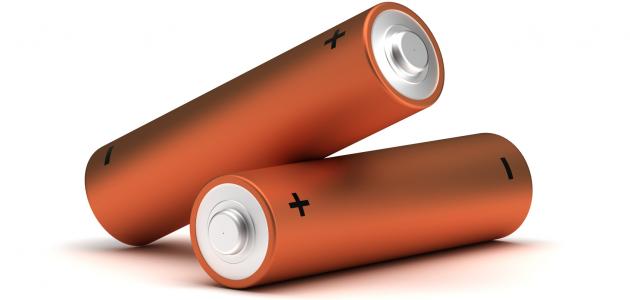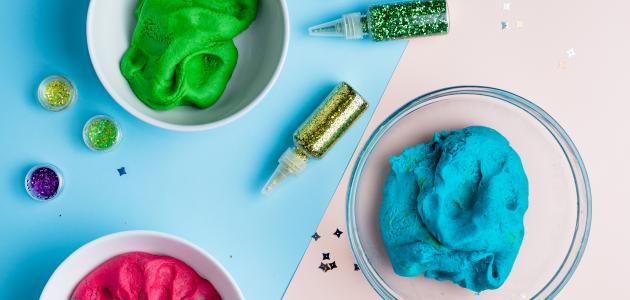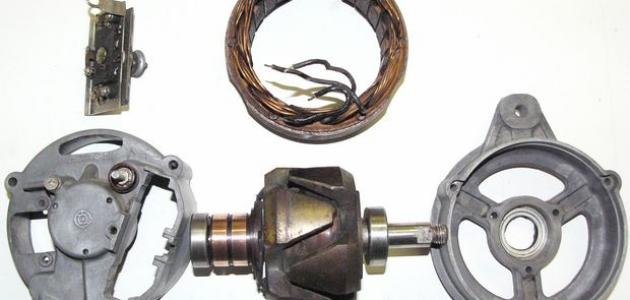the battery
The battery is one of the useful inventions for humans, as it provides a portable source of electrical power without the need for electrical outlets, and it is also very useful during a power outage. The battery was invented by the Italian scientist Alessandro Volta in 1799 AD. He made a simple battery consisting of metal plates and cardboard immersed in a brine solution, and since that time scientists have used Volta’s simple design to make batteries of different sizes and shapes. The working principle of all types of batteries depends on converting the chemical reactions that occur between the metal plates and the brine solution into electrical energy. . Currently, there are many devices that contain batteries, such as wristwatches, smartphones, laptops, electric razors, flashlights, and many others.
Methods of making batteries
Many types of batteries can be made at home using metal materials and wires, and conductive materials such as salt water or lemon.
Soda battery
A soda-powered battery can be made by following these steps:
- Providing the necessary materials to make the battery, which are:
- A can of soft drink.
- Paper or plastic cup (6-8) ounces; That is (170-230) milliliters.
- A copper strip whose height is slightly more than the height of the cup, and its width is (1) inch. The strip can be replaced with wires connected together or bent in a zigzag fashion to reach the desired width.
- a pair of scissors.
- Potentiometer.
- Two extension cords with connector clips at each end.
- Fill the cup three-quarters with soft drink.
- Ensure that the soft drink bottle is completely empty.
- Cut a strip of aluminum three-quarters of an inch wide from one side of the soft drink bottle. So that the tape is slightly longer than the cup, and an aluminum tape can be purchased instead of cutting part of the soft drink container.
- Sand the aluminum strip cut from the soft drink can on both sides (optional).
- Place the straps in the cup filled with soft drink, making sure that the straps do not touch, then bend the straps until they hang from the edge of the cup.
- Connect a connection wire to the first aluminum strip using a connection clip, and repeat this on the second strip, taking care not to touch the connection clip to the soft drink.
- Connect both ends of the connection wire to the potentiometer according to the instructions; This is to measure the battery voltage difference, which is approximately 3/4 volt.
Salt water battery
A salt water battery can be made by following these steps:
Read also:How is plastic made?- Providing the following materials:
- Non-metallic plastic or paper cup with a volume of 180-240 ml.
- Two different types of metal strips, three-quarters of an inch wide. Zinc, copper, or aluminum strips can be used.
- A tablespoon is 14.79 ml of salt. A tablespoon of salt can be replaced with a teaspoon of 4.93 ml of salt, a teaspoon of vinegar, and a few drops of bleach in the water. Be careful when using bleach. As it is a dangerous chemical.
- a pair of scissors.
- Potentiometer.
- Two extension cords with connector clips at each end.
- Fill the cup three-quarters with water.
- Add a tablespoon of salt, or a mixture of salt, vinegar and bleach to the water and stir.
- Place the two metal strips in the cup and make sure that the strips touch the salt solution and hang from the edge of the cup.
- Connect a connection wire to the first metal strip using a connection clip, and repeat this on the second metal strip, taking care not to touch the connection clip to the solution.
- Connect both ends of the connection wire to a voltage meter according to the instructions to measure the battery voltage difference, which is approximately 3/4 volts.
14-cell water-powered battery
A water-powered battery can be made by following these steps:
Read also:How to make magnets- Providing the necessary materials:
- Some copper wire.
- Ice cube making mold.
- Water.
- A number of screws equal to the number of ice cubes, and an additional screw to use as the negative terminal.
- a pair of scissors.
- Potentiometer.
- Two extension cords with connector clips at each end.
- Cut the copper wire so it fits twice around the top of each screw, then bend the screw into the shape of a fishing hook.
- Install one screw on the edge of each cell of the ice cube tray.
- Install a copper wire on the outer end of the cell that is located on the end of the ice cube mold, install a screw in the terminal cell next to it, and wrap a copper wire on the top of the screw.
- Fill all cells of the ice cube mold with water, making sure that the water covers the wire hooks attached to the screws.
- Connect a connection wire to the wire hanging from the screw using a connection clip, and connect another wire to the wire fixed to the cell next to it using a connection clip, taking care not to touch the connection clip to water.
- Connect the free ends of the two wires to a potentiometer; To ensure that the battery that was manufactured has a voltage difference of (9) volts.
- Battery voltage can be boosted by replacing the water with lemon juice, a mixture of brine with vinegar, bleach, and lemon juice, or by using a larger amount of copper.
Hand operated battery
To make a hand-operated battery, you must follow the following steps:
Read also:Benefits of laurel soap for hair- Providing the necessary materials to make the hand-operated battery, which are:
- A palm-sized copper plate, and another aluminum plate.
- Potentiometer.
- Two extension cords with connector clips at each end.
- A piece of wood or plastic.
- Place the copper and aluminum plates on the piece of wood.
- Use connector clips to connect the copper plate to one end of the potentiometer, and the aluminum plate to the other end of the meter.
- Placing a hand on each panel causes an interaction between the sweat resulting from the hands and the panels and a reading appears on the potentiometer. If no reading appears, the connections can be reversed.
- Clean the boards with a pencil eraser or dishwashing wire to remove oxidation when you have difficulty getting a reading.
Types of batteries
Batteries can be classified into two main types:
- Primary batteries: These are single-use batteries that cannot be recharged. They include: alkaline batteries, zinc-carbon batteries, mercury batteries, and silver oxide batteries.
- Secondary batteries: They are batteries that can be recharged several times depending on the type of battery, and include: lead-acid batteries and lithium batteries.









